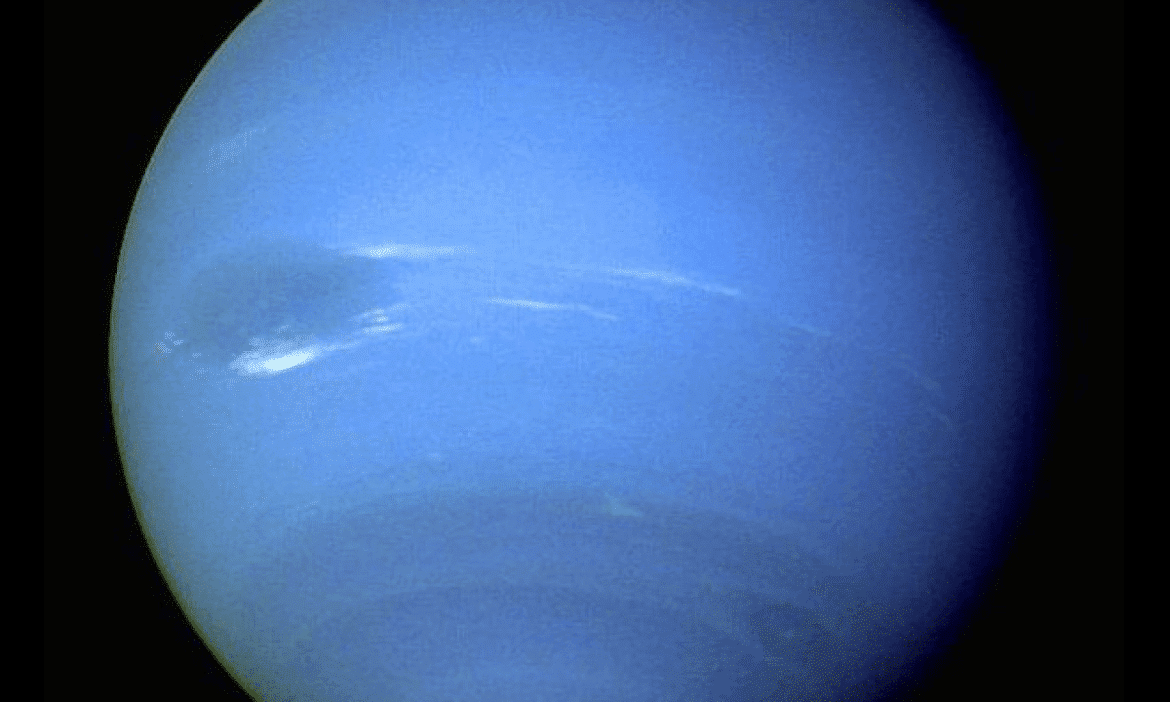2.1K
It is an exciting question what Neptune is made of. The eighth and outermost planet in our solar system is about 4.5 billion kilometres from the Sun and still holds many a mystery.
What is Neptune made of? The composition of the planet
The ice giant Neptune is named after the Roman god of the sea – although no seas of water are found on its surface. Because of its great distance from Earth, it is still not fully understood what it looks like beneath the planet’s surface.
- Just like Jupiter, Saturn and Uranus, Neptune is a gas planet. Thanks to its size and colour, it is also called an ice giant, just like Uranus – even though real ice, as we know it on Earth, is not to be found on Neptune.
- Researchers assume that there is a solid core of rock and metal inside the planet. This is thought to be about the size of Earth and 1 to 1.5 times the mass of Earth.
- On top of this is the ice mantle consisting of water, ammonia and methane. All three substances, due to temperature and pressure conditions, occur as a hot and liquid mixture known as “ice” in astronomy.
- The atmospheric layers consist mainly of helium, hydrogen and a little methane. The latter is responsible for the planet’s blue colour because methane absorbs red light.
- The lower part of the atmosphere again contains larger amounts of ammonia, water and methane. There is no clear transition between the lower atmosphere and the mantle.
The most important data on the planet Neptune
Even before the discovery of Neptune, scientists had calculated that another planet must be hiding behind Uranus. Since Neptune cannot be seen with the naked eye, the discovery took some time. It was not until 1846 that the German astronomer Johann Galle was able to observe the planet through a telescope for the first time.
-
- With a diameter of around 50,000 kilometres – 3.8 times the diameter of the Earth – Neptune is the fourth largest planet in the solar system. Inside it would fit our Earth a full 60 times.
-
- Despite its size, Neptune revolves around itself comparatively quickly. A day on the icy planet lasts only 16 hours and 16 minutes. However, it takes 165 years to orbit the sun.
-
- Neptune is an extremely stormy place: in 1989, the Voyager space probe measured wind speeds of more than 2000 km/h during its flyby.
-
- The temperature on the surface of Neptune is -201°C. Researchers have found that there are seasons on Neptune. These alternate in a rhythm of about 40 years, and temperatures can rise by about 10 degrees at the height of summer.
-
- Neptune is surrounded by a very fine ring system and 14 known moons. The largest and best-known satellite is Triton, which, with a diameter of 2700 kilometres and a temperature of -237°C, is the coldest moon in the solar system according to current knowledge.

